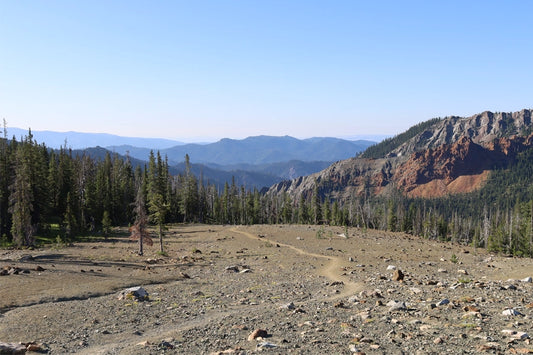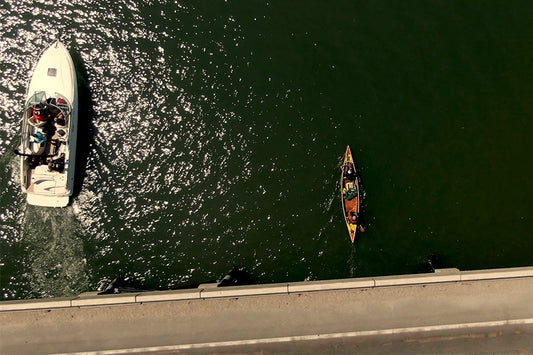Columbia River Canoe Project
The Columbia River Canoe Project Documentary follows the entirety of the expedition while examining the complex issues facing the Columbia River Watershed between Butte, Montana, and Astoria, Oregon. It is a story of inspiration, grit, and growth, set in one of North America's most beautiful and important rivers. The Columbia River Canoe Project Documentary makes its world premiere at the expedition starting place, in Butte, Montana, on August 30th, 2024, with wider distribution both online and at local theaters throughout the fall and winter.

The 1300-mile canoe journey began in Butte, Montana in what is known as Silver Bow Creek on May 12th, 2023. This tributary of the upper Clark Fork (of the Columbia) Watershed was followed to the main body. The Clark Fork then carried the team on to Lake Pend Oreille and the river that bears the same name. After a short section in Canada, the Pend Oreille River flowed into the main body of the Columbia River. The journey then followed the Columbia through Washington, to the border with Oregon, and past Portland. On July 2nd, 2023, after 52 days the team completed their journey by reaching the Pacific Ocean.
 ( Launching the canoe into the Columbia River. ) Photo by - Jonathan Stone |
 ( Settled in the canoe into the Columbia River. ) Photo by - Jonathan Stone |
Completely Human Powered Adventure

( Robert and Braxton fight to keep their canoe from drifting down river. Robert is wearing the Arx Rain Jacket and Guide Lite Glove, while Braxton is wearing the Hooded Geo-T. ) Photo by - Orion Herman
Quick Facts:
- Traveled Over 1300 Miles Total
- Portaged for over 175 Miles Total
- Longest portage in one day was 24 miles
- Longest paddling day over 75 miles
- First documented source to sea paddle down this eastern headwater of the Columbia River.
- Traveled through Montana, Idaho, Washington, Oregon, and a section of Canada.
Let's Meet The Paddlers:

( Braxton Mitchell and Robert Lester both in the Hooded Geo-T L.S. Shirt. ) Photo by - Orion Herman
Robert Lester:

( Robert Lester navigating in the Hooded Geo-T. ) Photo by - Orion Heman
Robert is a 26-year-old professional skier, mountaineer, and adventurer. Who grew up in the mountains around Butte Montana, developing a love for the outdoors and adventure from a young age. That love of the outdoors and natural world naturally led to a desire for conservation and a passion for environmental stewardship.
Braxton Mitchell:

( Braxton Mitchell portaging a Navarro Canoe while in the Todra L1 S.S. ) Photo by - Orion Herman
Braxton stepped into the expedition as a last-minute replacement. While Robert had various relevant oar-frame trips and whitewater experience. Braxton had never even been in a canoe until one week before the trip as we tried to get him training hours. Growing up in Ogden Utah, with passions rooted in the automotive world and car culture, this was the first major outdoor adventure of Braxton's life. He turned 19 on the expedition and watching this journey make him grow and develop as a person was one of the most rewarding experiences of the entire expedition.
Conclusion
The Columbia River Canoe Project started as just a childhood dream to follow a river to its end. What it became was an expedition of a lifetime with goals to inspire others and promote environmental stewardship. Living on the river for 52 days Robert Lester and Braxton Mitchell canoed over 1,300 miles from the Continental Divide near Butte Montana to the Pacific Ocean. On the expedition the two-faced diverse challenges from navigating raging rapids, to paddling miles of flat water under the scorching sun, and even portaging all 19 hydroelectric dams on the route. However, through hard work and harsh conditions, the pair got to experience the entirety of one of North America’s greatest rivers and all the beauty it encompasses. After all, it’s the hardships; the thousands of paddle strokes, miles of carrying the canoe, and battling the wind that made the salt water of the Pacific Ocean taste so sweet.
"After 52 days of abuse and protecting us from rain, wind, sun and cold we arrived at the ocean with the same clothes we left Montana in, and functionally the entire layering system was good as new. There were stains and blemishes, but not one article of the system was ripped, torn, worn through, or worn out. " - Robert Lester.
During the expedition, it was crucial for the team to have a reliable layering system to shield them in all types of conditions. Additionally, they required durable outerwear that could withstand the challenges they would encounter while ensuring their comfort. The team turned to Beyond Clothing to outfit them for their task. Leaving with a full expedition layering set each the team had no other clothing, often washing the clothes in the river or with them in a campground shower when there was that rare luxury.







1 Comment
Thank you for dedicating your time to this trip. It’s something I would enjoy, if I were a younger man. I look forward to seeing the documentary.